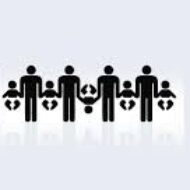Via the New York Times:
When it opened in 1998, the Shuang Wen Academy was heralded as a new kind of boutique public school, rooted in a mission of cross-cultural understanding. Small and open to children of any background, it was billed as the nation’s first dual-language English-Mandarin public school, teaching fluency in both languages. Twelve years later, the school, on the Lower East Side, which runs from prekindergarten to eighth grade and has an enrollment of 660, boasts outstanding scores on standardized tests but is in turmoil.
The school is the target of nine city investigations stemming from allegations that it compelled families to pay for after-school instruction, tampered with the city enrollment process, mismanaged its finances and manipulated surveys on parents’ satisfaction with the school. In addition, a series of anonymous, threatening letters directed at the principal and parent leaders prompted the parents association to budget $20,000 for legal assistance and stepped-up security…
Among the issues under investigation is whether an instructional after-school program at Shuang Wen may charge $1,000 per student, as it began doing this year. After-school programs run by private organizations may charge a fee if they are not providing necessary instruction, the city said. Shuang Wen’s after-school program is run by a nonprofit group, the Shuang Wen Academy Network, or SWAN, which was instrumental in founding the school.
I’m going to let the notion of a “boutique” public school go, and focus more on the idea of how this bi-lingual public school is structured. Apparently, Shuang Wen’s daily curriculum is almost entirely taught in English; the Mandarin-language education comes as part of an after-school program, which is technically voluntary, but strikes me as less so (what’s the point of going to a bi-lingual, English-Mandarin school if you’re not going to study Mandarin?). When the school first opened, the after-school language instruction was free, and as mentioned in the quote above, administered by a non-profit that was instrumental in founding the school in the first place.
Now, though, with the recession, and New York’s dire financial situation, state funding for the program has been cut, and the non-profit is requiring families to pay as much as $1000 to participate in the program, which, again, is only nominally voluntary. It should also be pointed out that the school is located on New York’s Lower East Side, a predominantly low-income neighborhood.
Let me repeat: $1000 fee for a public school. Granted, this is far cheaper than what a private school would charge for the same education, but still: this is a public school in a poor neighborhood that is charging students to deliver the bi-lingual education that is the basis for the school’s existence.
New Jersey!

I assume that at some point the 13-installment Jersey series will touch on the subject of property taxes? $1000 is about a month’s worth of them for an average-priced home in many towns/boroughs with great “free” public schools.
(The shenanigans at Shuang Wen are unfortunate in any case.)
Yes, eventually, we’ll talk about property taxes, I’m sure, but let me give you the short answer: they’re a motherfucker. I don’t think it’s much better in New York’s suburbs—it may be worse, in fact—but that tax bill really stings. Especially with services getting a bit long in the tooth.
But remember that property taxes fund more than the schools—it’s also for police, road maintenance, libraries, hospitals, all kinds of services are bundled in.
This was broken out in a recent tax mailing that I don’t have in front of me, so I can’t give you the exact breakdown. I’d certainly never suggest that public school is truly free—public education is a big part of that ginormous tax bill.
The $1000 covers the after school program for the entire school year (about $27 a week), which runs from 3-5 PM, after the Dept of Education day program. This after school program was never funded by the Dept of Education to offset the operations of the program – there were grants that parent volunteers had secured in the past that had covered expenses of the program but those grants have since expired. It would be great for the program to have remained free, but without additional funding, the question is, how would this program continue to operate? Should the after school staff no longer be paid? Can you offer solutions as to how this program could remain free? Do you have $1M that you could grant to the school to keep the after school program free? The sad fact is that for all the trumpeting that the DoE has used the school for, there’s actually been very little support for the school, the lions’ share of funding coming from the blood and sweat of parent volunteers that have raised money in the past. It’s actually kinda of a miracle that a program with so little resources (and not a few political enemies, as you can see by some of the piling on happening leading up to and in the wake of these recent articles) has thrived in such an environment.
To answer your question about why parents would want to attend Shuang Wen, you may want to consider that it is one of the top performing schools in NYC academically. Parents have flocked to school because it is successful. The opportunity to attend a high quality after school program that teaches kids an additional language at a low cost is another part of the school’s appeal.